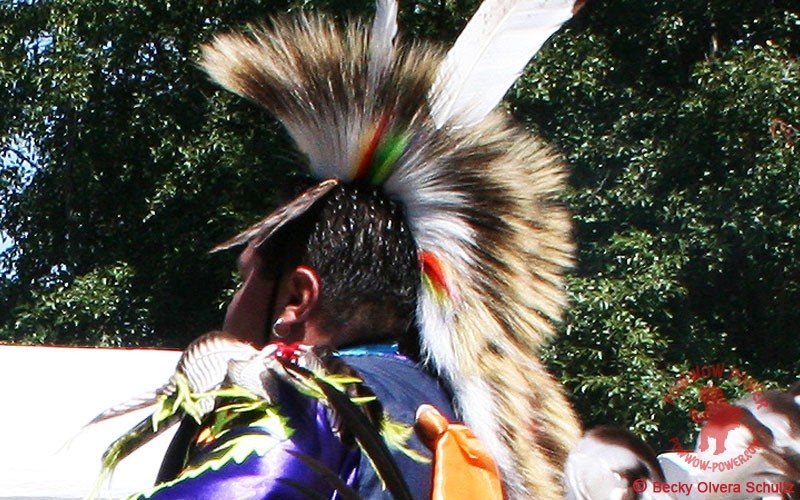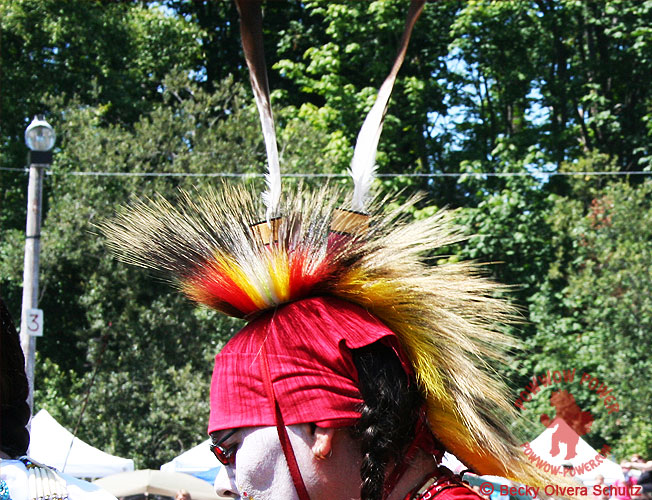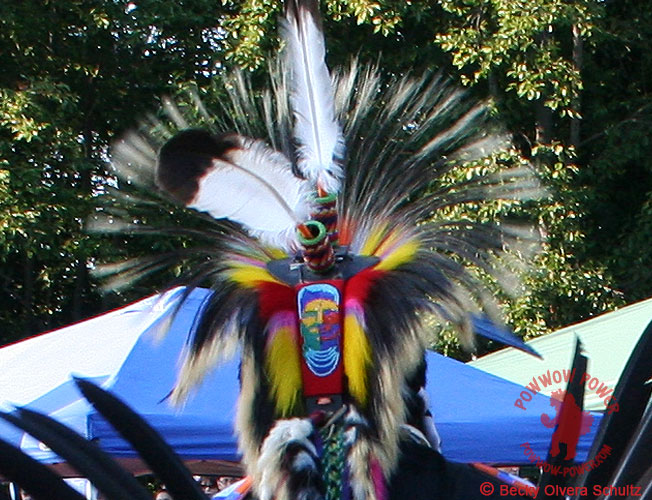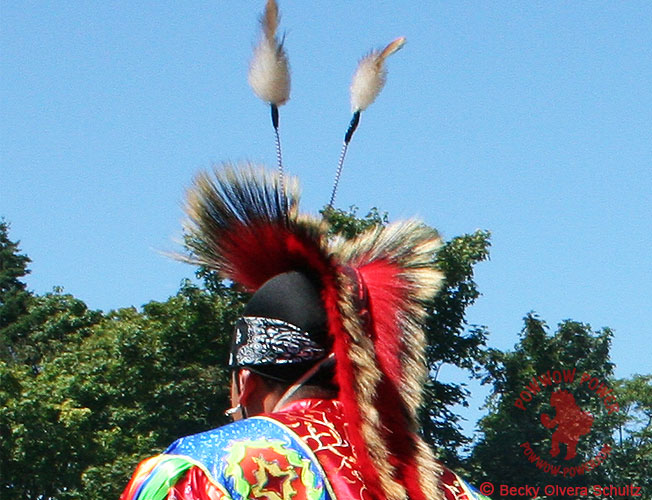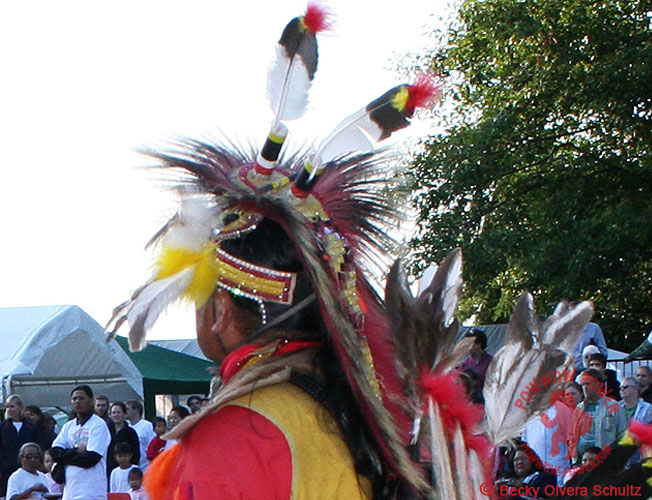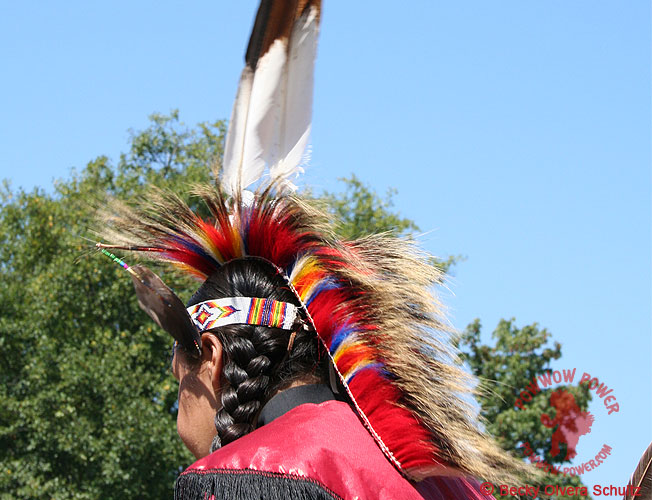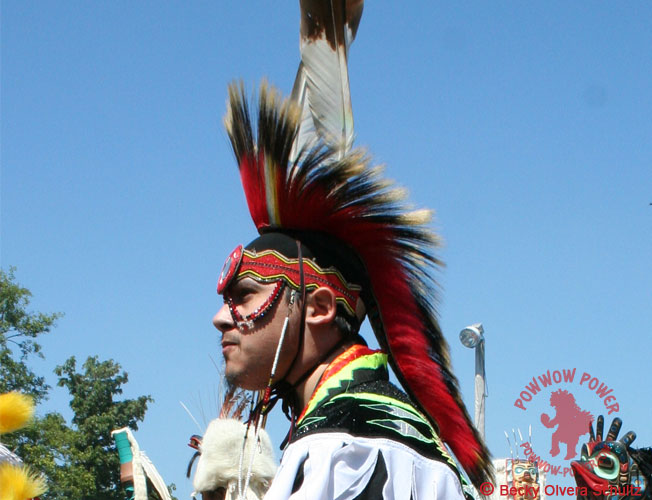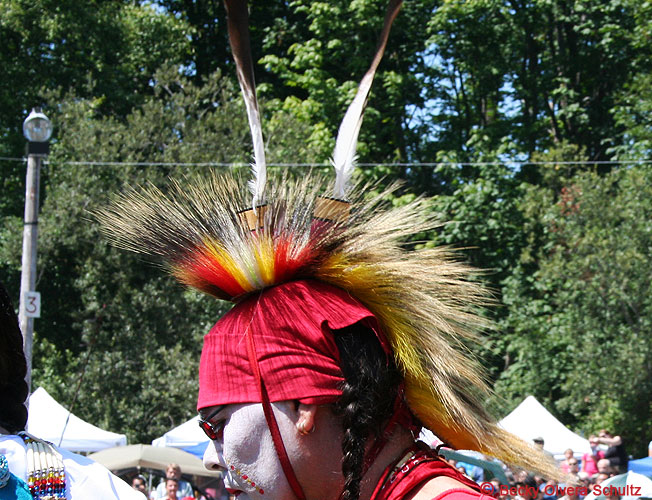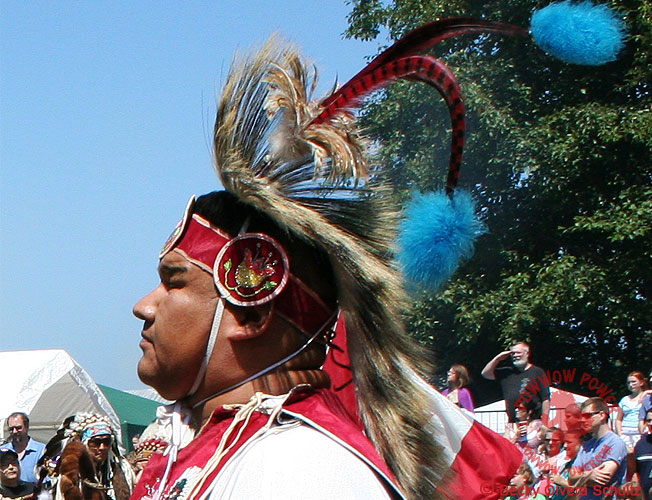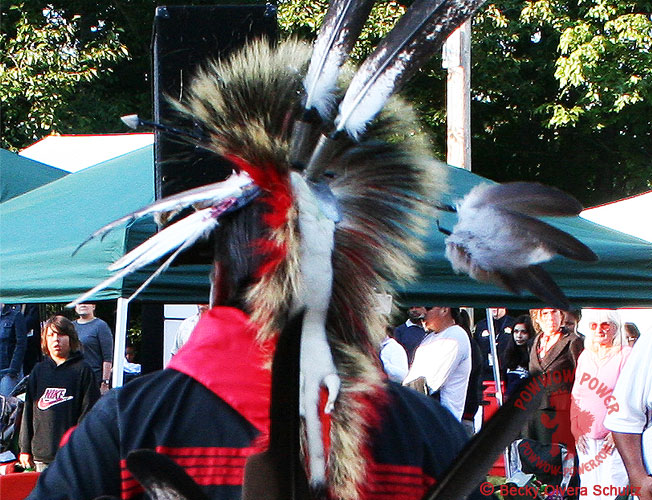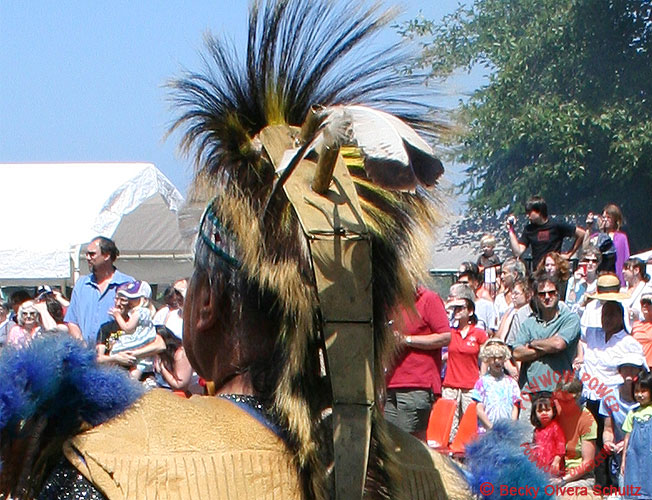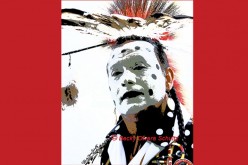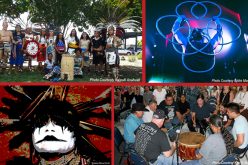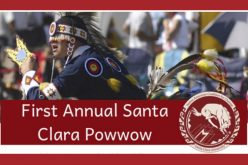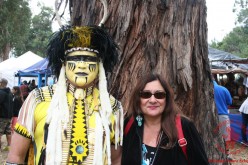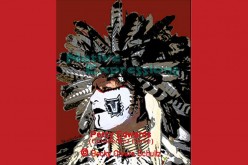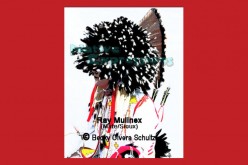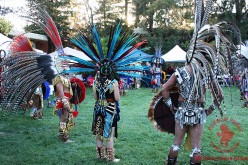Traditional Component of Powwow Dance Regalia
The porcupine roach is one of the oldest types of head dress. Porcupine hair roaches are worn by many male Native American dancers as an important part of their regalia. Porky roaches have been a traditional headdress for males of several tribes for many years.
A roach is primarily made of the guard hair of the porcupine but can also be made from moose hair, the hair of the white tail deer, horse hair and from black turkey beards.
Roaches are usually dyed red or other bright colors. Red usually symbolized killing an enemy. Some roaches can be quite long, trailing down from the top of the head to the lower the neck area.
The making of a roach is a complex and tedious process. The hair first has to be segregated by length, from the shortest to the longest and back to the shortest again. Next cord, rope or yarn is coiled and sewed together, much the way a rag rug is made, to form the long narrow base. Small bunches of the hair are then tied to a long cord stretched taut. After all the hair has been tied to the cord, the cords are then sewn to the braided base. A spreader is used to keep the roach open and give it shape. Spreaders are made from metal, wood, bone, elk antler, rawhide, leather or German silver.
The spreader has cylinders attached to the spreader. The eagle feathers are inserted into the cylinder. The ends of the feather quills have a barrel swivel inserted which is attached to the spreader via the cylinder. Spinner feathers represent enemies fighting. Sometimes the feathers touch each other when they spin, representing the battle between the enemies.
Here are two excellent videos:
How to Make a Native American Porcupine Hair Roach
Making Regalia With Juaquin Lonelodge, Constructing Roach Spinners
Concerning the name “roach”, Dr. James H. Howard stated in 1958:
“This headgear is apparently called ‘roach’ in English because of its resemblance to the roaching or clipping of a horse’s mane which was considered stylish in the 19th century. The roach headdress of animal hair almost certainly originated in the custom, formerly observed by some Indian men, of cutting all the hair from the head except for a narrow strip running from the crown to the base of the neck.”
Here are some fine examples of variations of the porky roach:


